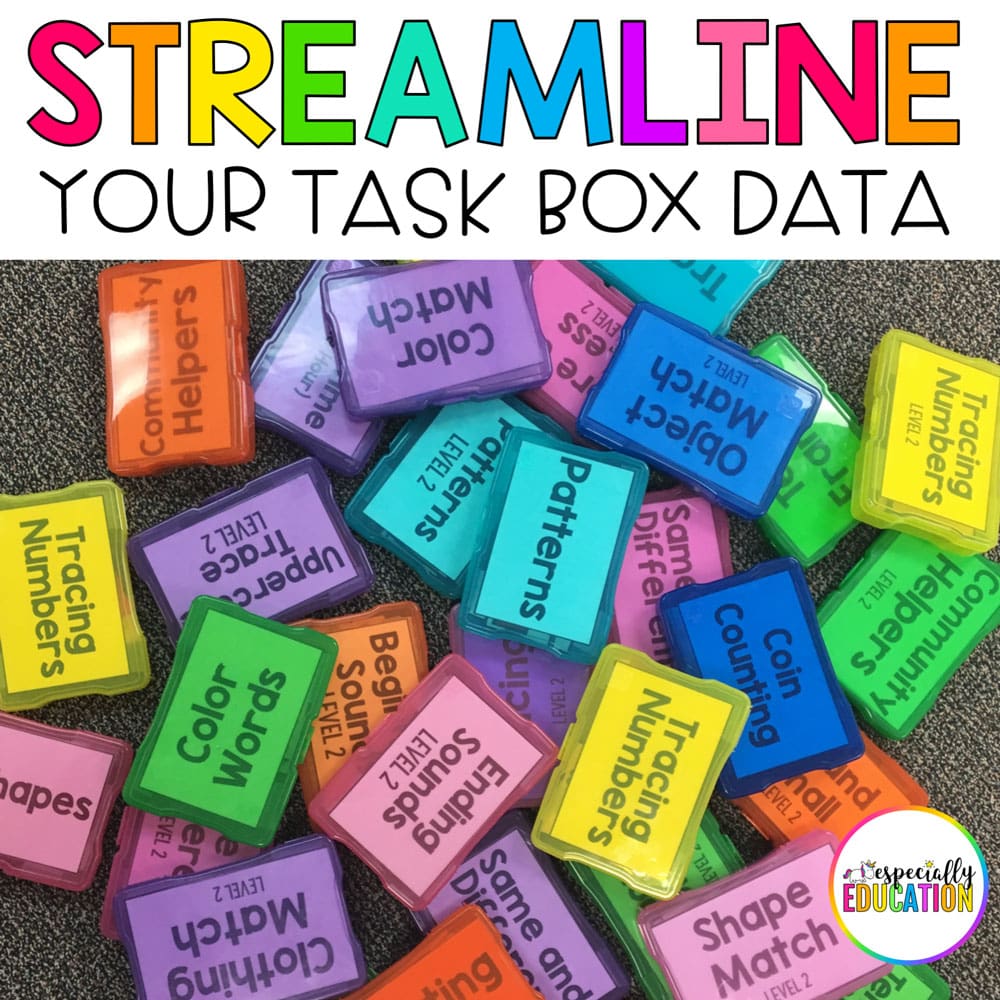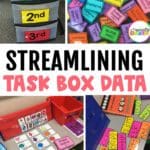Recently voted “Teacher of the Year” of her Austin, TX campus, special teacher, Hannah Cash, uses Especially Education task boxes to build independence in her students with mild to moderate disabilities, and shares the quick and simple editable data collection system she developed to ensure student progress can easily be monitored by multiple adults.
One thing I knew I wanted to incorporate in my classroom this year was task boxes.
After being introduced to task boxes, I was impressed with the concept and knew it could change the structure of my class while also promoting student independence.
However, one thing I knew could potentially be an issue with task boxes was data collection. After a few months of trial and error, I believe I have developed a successful and streamlined data collection system.
Before I go into data collection, it is important to describe how task boxes changed my life as well as how I use them in my classroom. Task boxes are part of my academic rotations.
I typically have small group lessons at my table while students are working on task boxes at their desk with a Teaching Assistant sitting next to them.
Task boxes serve a different purpose for each student.
Currently, my students have a wide range of abilities. While some students with multiple impairments are working on mobility, other students are concentrating on multiplication. With my current students, I use task boxes for the following purposes:
- Building independence. For these students, my go-to task boxes are The Original Task Box Bundle.
- Generalizing objectives taught and extra practice. For these students, my go-to task boxes are Math Higher Level Task Boxes.
- Mobility (i.e. picking up an item and matching it to another item). For these students, my go-to task boxes are Basic Skills Task Boxes.
Since each task box provides a different purpose, I realized data collection would look different for each student. because I want students to understand the objective of the task box, and are able to complete it independently, the first thing I created was a data collection sheet to determine if students are completing tasks correctly.
The second data sheet I designed makes sure students are working towards completing the task- without worrying about accuracy.
It is important students become independent and begin a task box without needing prompting from teachers.
I am lucky to have a Teaching Assistant monitor my students while they are working on the task boxes.
During this time, the assistant collects data and help students if needed. However, there are plenty of times when TAs are pulled or out in inclusion and I have to collect the data. One thing I found helpful is getting everything set up in the morning.
I fill in all the task boxes given and any other information I can (such as the total number of activities in the task box).
This method helps data collection take only a few seconds to complete.
Since the school day is always so busy, I usually have the data sheets piled up at my table and will review them after school. I like to take some time at the end of the day to review and see what concepts my students are struggling with or what they are mastering.
This helps with understanding what I may need to reteach or if I feel that the students are ready to move to the next concept.
Another thing I like to do with the data collected is celebrate student achievement. One of my favorite things with data collection is being able to show the students the progress they have made. This gives students a chance to bask in their accomplishments.
I have included the data collection sheets I currently use and hope it’s something you can start to use in your classrooms, too!


Leave a Reply